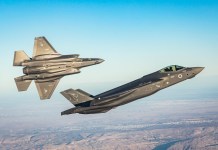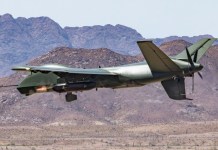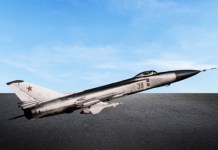As the Ukraine War intensifies, the Russian military has reportedly stepped up using kamikaze drones like KUB-BLA (Cuba) along the entire front line.
The increased reliance on kamikaze drones over artillery fire likely signals a paradigm shift in Russian tactics – a shift introduced to counter high mobility offensive probing by Ukrainian forces.
In this article, we dwelt on Russia’s increased use of surveillance drones to plug gaps in the deployment of Russian forces along the front line.
On October 28, Izvestia reported that units of the Russian Airborne Forces (VDV) used Cuba drones to destroy shelters for the personnel of the Armed Forces of Ukraine (AFU).
According to Izvestia correspondent Natalia Grafchikova, Russian forces first launched a reconnaissance drone to locate and pinpoint the target coordinates. Next, they attacked the target using kamikaze drones fitted with a high-explosive fragmentation warhead.
According to the Russian Airborne Forces unit commander, “Artillery inflicts fire damage to a wider area, and there is a large consumption of ammunition. Loitering ammunition allows you to immediately inflict fire damage right on target.”
It’s possible to launch Cuba from unprepared sites, even the roof of a car! For the safety of the personnel operating the drones, the drones are launched from a location outside the adversary artillery range. The launch is not rocket-assisted and hence difficult to detect.
KUB-BLA Characteristics
The KUB-BLA is manufactured by ZALA Aero, which is part of the Kalashnikov Group of Companies. It’s a relatively small (1.2m wingspan) drone with a 3 kg warhead and a top speed of 130 kph.
Its outstanding features include silent operation, stealth design, long loiter capability, and, most significantly, the ability to identify its target using AI. The drones have an accuracy between 5 to 10 m.
ZALA Aero says the advantages of KUB-BLA include “high accuracy, hidden launch, noiselessness, and ease of use.”
“The explosive can be delivered to the target regardless of how well hidden it is. It operates at both high and low altitudes regardless of hidden terrains.”
The drone is programmed to autonomously navigate using SATNAV to a target located at the coordinates fed into the drone. The target coordinates can likely be updated in flight based on data streamed by a surveillance drone covering the target area.
The drone is powered by a pusher propeller at its rear driven by a silent electric motor. The battery-powered drone has a flight endurance of 30 min.

Ability To Penetrate Adversary Defences
After launch, the drone autonomously navigates to the target area and dives onto the target. Low observable (LO) aerodynamic shaping makes radar detection difficult.
LO shaping and the complete absence of heat signature practically rule successful adversary MANPAD attack. Audio stealth combined with LO shaping and the absence of heat signature significantly increases the probability of the “Cuba” reaching the target location.
Typically, the drone is used to neutralize targets such as enemy dugouts, single or a group of armored vehicles, and accumulation of manpower, including manpower, hiding undercover in a forest or dispersed along a trench.
Considering that the drone’s warhead is a mere 3 kg, it’s unlikely that a single drone can be effective against a group of armored vehicles.
Russian forces are using small swarms comprising 2 to 3 drones launched at short intervals to attack groupings. Swarm attack increases the probability of at least one drone striking the target in case of attrition from ground-based defenses.
Also, swarms give operators the flexibility for immediate follow-up attacks on dispersing armored vehicles or infantry soldiers.
Serial Production
The “Cuba” was unveiled at IDEX 2019. State trials were completed at the end of 2021. Russia used the drone at the start of the special military operations.
Maj. Gen. Kyrylo Budanov, head of Ukraine’s Defence Intelligence directorate, recently stated in a media interview, “Yes, at the very beginning of the conflict on February 24 and so forth, there were a few cases recorded of the application of a Russian loitering munition called Kub.”
Until now, the use of drones by Russian forces has been sparing. The Russian MoD, on May 18, 2022, released video footage of American M777 howitzers with a Ukrainian artillery crew being struck by a KUB.
It’s likely Russia has been using the drones sparingly either because of operational shortcomings or a lack of inventory. Increased use of the drone now would indicate that operational glitches have been removed and serial production has started.
The significant ramp-up in Russian drone usage belies Western claims about the Russian inability to produce high-tech military equipment because of sanctions.
- Vijainder K Thakur is a retired IAF Jaguar pilot. He is also an author, software architect, entrepreneur, and military analyst.
- Reach out to the author at vkthakur (at) gmail.com
- Follow EurAsian Times on Google News





